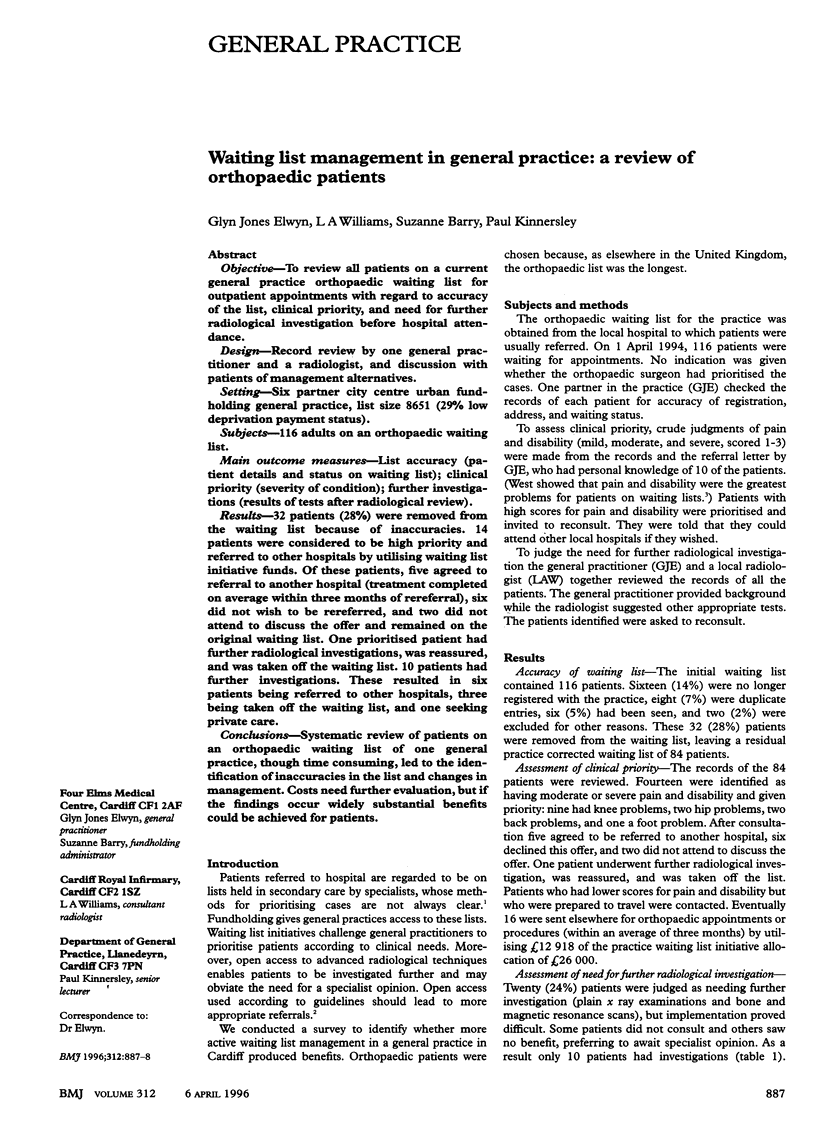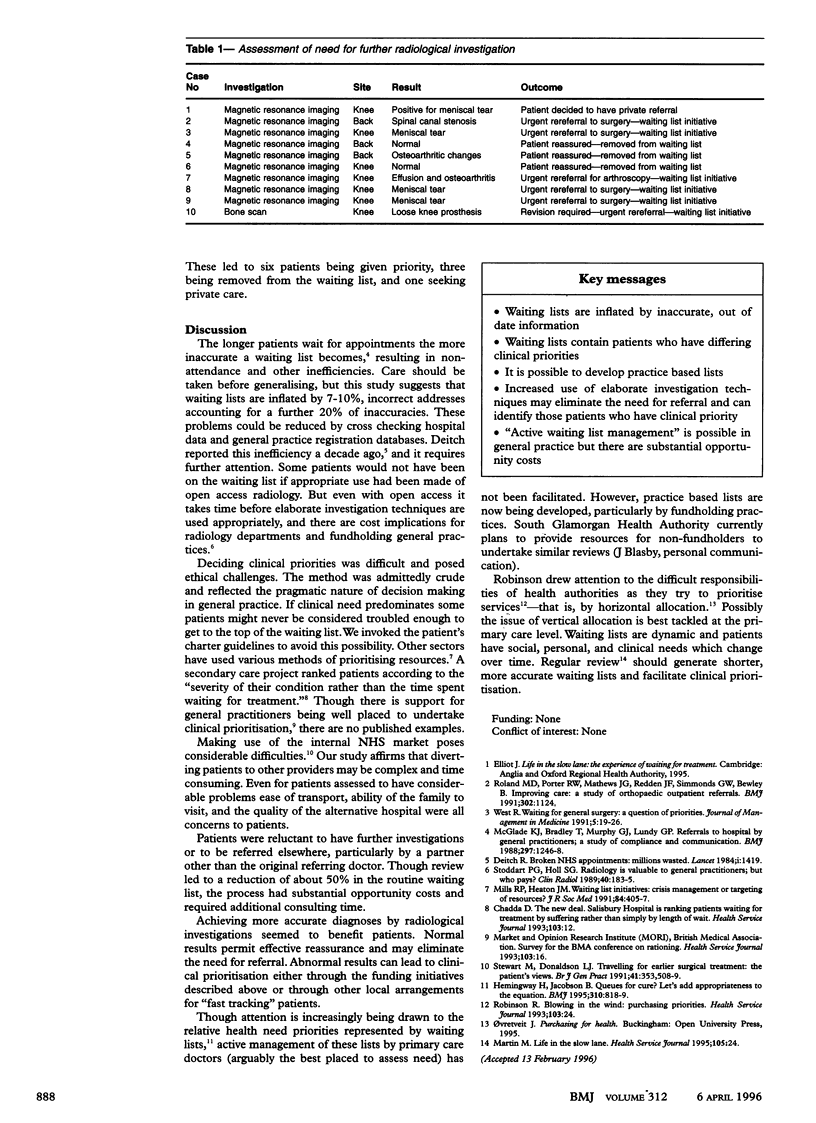Abstract
OBJECTIVE: To review all patients on a current general practice orthopaedic waiting list for outpatient appointments with regard to accuracy of the list, clinical priority, and need for further radiological investigation before hospital attendance. DESIGN: Record review by one general practitioner and a radiologist, and discussion with patients of management alternatives. SETTING: Six partner city centre urban fund-holding general practice, list size 8651 (29% low deprivation payment status). SUBJECTS: 116 adults on an orthopaedic waiting list. MAIN OUTCOME MEASURES: List accuracy (patient details and status on waiting list); clinical priority (severity of condition); further investigations (results of tests after radiological review). RESULTS: 32 patients (28%) were removed from the waiting list because of inaccuracies. 14 patients were considered to be high priority and referred to other hospitals by utilising waiting list initiative funds. Of these patients, five agreed to referral to another hospital (treatment completed on average within three months of rereferral), six did not wish to be rereferred, and two did not attend to discuss the offer and remained on the original waiting list. One prioritised patient had further radiological investigations, was reassured, and was taken off the waiting list. 10 patients had further investigations. These resulted in six patients being referred to other hospitals, three being taken off the waiting list, and one seeking private care. CONCLUSIONS: Systematic review of patients on an orthopaedic waiting list of one general practice, though time consuming, led to the identification of inaccuracies in the list and changes in management. Costs need further evaluation, but if the findings occur widely substantial benefits could be achieved for patients.
Full text
PDF

Selected References
These references are in PubMed. This may not be the complete list of references from this article.
- Deitch R. Broken NHS appointments: millions wasted? Lancet. 1984 Jun 23;1(8391):1419–1419. doi: 10.1016/s0140-6736(84)91924-x. [DOI] [PubMed] [Google Scholar]
- Hemingway H., Jacobson B. Queues for cure? BMJ. 1995 Apr 1;310(6983):818–819. doi: 10.1136/bmj.310.6983.818. [DOI] [PMC free article] [PubMed] [Google Scholar]
- Klein R. On the Oregon trail: rationing health care. BMJ. 1991 Jan 5;302(6767):1–2. doi: 10.1136/bmj.302.6767.1. [DOI] [PMC free article] [PubMed] [Google Scholar]
- Martin M., Elliott J., Hart M. Waiting lists. Life in the slow lane. Health Serv J. 1995 May 25;105(5454):24–26. [PubMed] [Google Scholar]
- McGlade K. J., Bradley T., Murphy G. J., Lundy G. P. Referrals to hospital by general practitioners: a study of compliance and communication. BMJ. 1988 Nov 12;297(6658):1246–1248. doi: 10.1136/bmj.297.6658.1246. [DOI] [PMC free article] [PubMed] [Google Scholar]
- Mills R. P., Heaton J. M. Waiting list initiatives: crisis management or targeting of resources? J R Soc Med. 1991 Jul;84(7):405–407. doi: 10.1177/014107689108400709. [DOI] [PMC free article] [PubMed] [Google Scholar]
- Stoddart P. G., Holl S. G. Radiology is valuable to general practitioners; but who pays? Clin Radiol. 1989 Mar;40(2):183–185. doi: 10.1016/s0009-9260(89)80088-1. [DOI] [PubMed] [Google Scholar]


